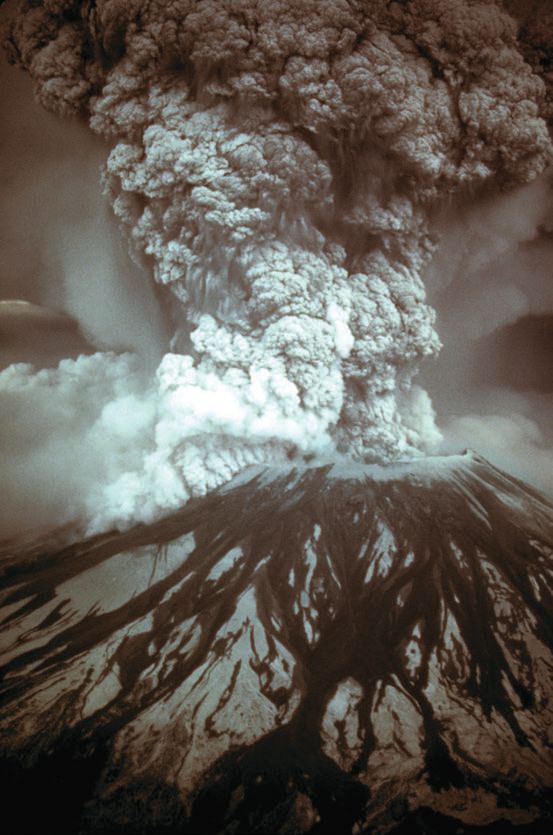Early Warning
Evan Zabawski | TLT From the Editor March 2015
The importance of improving failure prediction.

The volcano erupted as predicted, and it occurred without a single casualty.
CONDITION MONITORING IS CONSTANTLY UNDER CRITICISM for seemingly identifying potential failures only after they have evolved beyond the point of no return. The counterargument is that the user does not always recognize the early warning signs, with many users simply waiting for a threshold to be surpassed.
The issue lies in that not all forms of condition monitoring are equal. While vibration analysis and acoustic emission analysis have tell-tale signatures that can be recognized, infrared thermography and oil analysis mostly rely on trends. Too often users expect the latter two to behave like the former pair.
I often explain that half the key to successful oil analysis data interpretation is trending, namely establishing what is considered normal and then recognizing any abnormality that occurs afterwards. The other half is simply learning from past failures, essentially applying root cause analysis and migrating toward proactive maintenance or reliability-centered maintenance.
Take volcanic eruptions as an example, since we are approaching the 35th anniversary of Mount St. Helens’ major eruption on May 18, 1980. Earlier that year, on March 20, the mountain experienced a magnitude 4.2 earthquake, effectively ending 123 years of dormancy. The preceding days bore several smaller earthquakes, and the following two days tallied another 174 shocks with magnitudes greater than 2.6.
A week later steam started venting before a thunderous explosion spewed ash at least 1,800 meters (6,000 feet) into the atmosphere. On March 30 another 93 separate outbursts were reported, and on April 1 the first harmonic tremors were detected. The next six weeks saw the north face a bulge at a rate of 1.5-1.8 meters (5-6 feet) per day. Geologists feared the bulge area could slide and that such a landslide would trigger an eruption. A total of about 10,000 earthquakes were recorded before the May 18 eruption, but all visible eruptions ceased on May 16, prompting a significant reduction in public interest.
Two days later, a magnitude-5.1 earthquake caused the predicted slide (the largest in recorded history) which traveled at 177-249 km/h (110-155 mph), and some of it hit a ridge 10 kilometers (six miles) to the north. Most of the slide moved 21 kilometers (13 miles) eastward down a river valley filling it 180 meters (600 feet) deep with avalanche debris. This devastation was but a precursor to the catastrophic destruction and 57 deaths caused by the climactic eruption.
In hindsight it seems relatively simple to point to the renewed activity that started on March 20 as the earliest warning sign of the impending eruption, but it was not difficult to surmise that an eruption would occur; it was harder to sift through thousands of other points of data to predict
when it would occur and what the magnitude would be.
It would take another six years before U.S. Geological Survey geophysicist Bernard Chouet discovered such a method by observing the frequency of long-period seismic waves from the 1985 eruption of the Nevado del Ruiz volcano in Colombia. Chouet was later able to predict the 1989 and 1990 eruptions of Mount Redoubt in Alaska and the 1993 eruption of Galeras in Colombia. When scientists at the National Center for Disaster Prevention in Mexico City employed the same method in 2000, their prediction that Popocatépetl would erupt prompted the Mexican government to evacuate tens of thousands of people. The volcano erupted as predicted, 48 hours later, which was Popocatépetl’s largest eruption in 1,200 years and it occurred without a single casualty.
Early warnings are not always blatant, and reacting to every blip in the data leads to cry-wolf syndrome. By combining known signatures from previous failures and increasing attention when measurements fall outside of the norm, we are more able to truly predict the timing and severity of a failure.
 Evan Zabawski, CLS, is the senior reliability specialist for Fluid Life in Edmonton, Alberta, Canada. You can reach him at evan.zabawski@fluidlife.com
Evan Zabawski, CLS, is the senior reliability specialist for Fluid Life in Edmonton, Alberta, Canada. You can reach him at evan.zabawski@fluidlife.com.